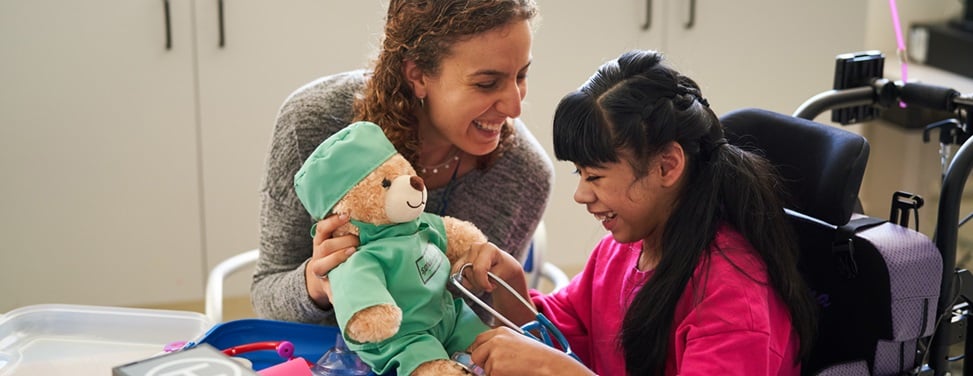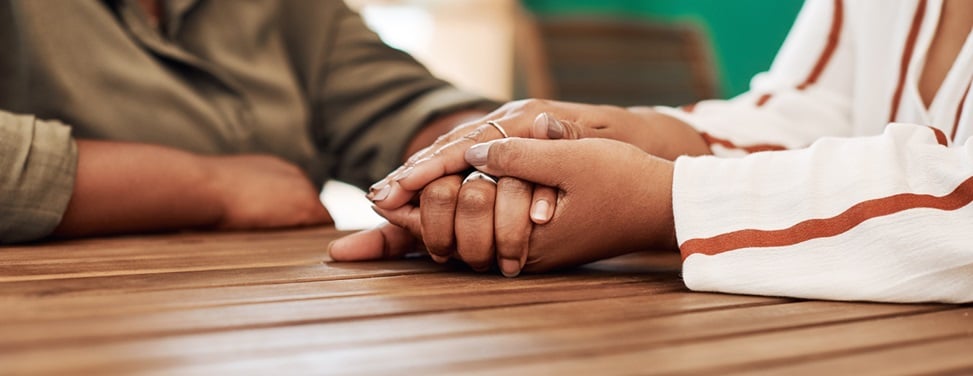At UCSF Benioff Children's Hospitals, we do everything we can to prevent and manage pain for all our patients. But you're the person who knows your child best and whose presence brings the greatest comfort, so you can play a major role. Here are some ways you can relieve your child's pain.
Plan ahead
- Ask your child's health care providers what to expect regarding pain.
- Work with the health care providers to develop a pain management plan.
- Help your child understand what to expect. Explain that this procedure or treatment is needed for a healthier body. Don't say it won't hurt. Instead, try saying, "You may feel a pinch or pressure," and then use whatever distraction method your child prefers (see below) to make it easier.
- Fill out a coping card. This allows you and your child to indicate preferences for managing needle procedures as well as other procedures and treatments.
Help your child relax before or during a procedure.
- Wrap your baby in a blanket; breastfeed or offer a bottle if possible.
- Rock your child.
- Have your child join you in taking slow, controlled breaths.
- Provide a favorite security object, such as a blanket or toy.
- Using a calm, soothing voice, help your child imagine being in a favorite or comfortable place, such as snuggled with a teddy bear or floating on an inner tube in the pool.
Provide distraction during painful procedures
- Have your child squeeze your hand tight.
- Help your child play with an interesting toy.
- Look at a book with colorful or pop-up pictures, or read a story together.
- Sing a song together.
- Tell your child a favorite story.
- Play with a puppet.
- Help your child listen to music using headphones.
Notify your child's care team about pain
- Ask for pain relief as soon as pain begins – it's easier to control then.
- If pain relief methods don't lessen your child's pain, let the health care providers know.
- Ask nursing staff for help, such as with readjusting your child's position or by providing ice or heat packs.
Create a calm, comforting environment in the hospital room
- Bring your child's favorite blanket, pictures or toys.
- Be a "door monitor," so your child can get some uninterrupted sleep.
- Ask visitors to come only at "awake" times.
- Dim the lights, and turn the TV down or off.
- Decrease noise and other sources of stimulation in the room.
If you need additional help preventing or managing pain, ask your child's health care providers about medicine-free techniques, such as aromatherapy, acutherapy, massage or meditation, some of which are available through Child Life Services. You can also ask your child's doctor for a referral to the Stad Center for Pediatric Pain, Palliative and Integrative Medicine. The Stad Center's specialists take a comprehensive approach to managing pain, using a range of both medical and medicine-free treatments.
Try these pain relief and relaxation techniques
Meditation, deep breathing and muscle relaxation promote healing and wellness by helping children feel less pain and anxiety. Learn these techniques from Dr. Stefan Friedrichsdorf, director of the Stad Center and one of the world's leading experts on pediatric pain.









































